Calcium diformate
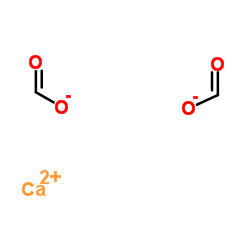
Calcium diformate structure
|
Common Name | Calcium diformate | ||
|---|---|---|---|---|
| CAS Number | 544-17-2 | Molecular Weight | 130.113 | |
| Density | 2,02 g/cm3 | Boiling Point | 100.6ºC at 760mmHg | |
| Molecular Formula | C2H2CaO4 | Melting Point | 300 °C | |
| MSDS | Chinese USA | Flash Point | 29.9ºC | |
| Symbol |

GHS05 |
Signal Word | Danger | |
| Name | Calcium formate |
|---|---|
| Synonym | More Synonyms |
| Density | 2,02 g/cm3 |
|---|---|
| Boiling Point | 100.6ºC at 760mmHg |
| Melting Point | 300 °C |
| Molecular Formula | C2H2CaO4 |
| Molecular Weight | 130.113 |
| Flash Point | 29.9ºC |
| Exact Mass | 129.957901 |
| PSA | 52.60000 |
| LogP | 0.51920 |
| Water Solubility | SOLUBLE |
Synonym:Calcium diformate; Calcoform; Formic acid, calcium salt Section 2 - COMPOSITION, INFORMATION ON INGREDIENTS
Risk Phrases: 36/38 Section 3 - HAZARDS IDENTIFICATION EMERGENCY OVERVIEW
Irritating to eyes and skin. Potential Health Effects Eye: Causes moderate eye irritation. May cause chemical conjunctivitis. Skin: Causes skin irritation. Ingestion: May cause gastrointestinal irritation with nausea, vomiting and diarrhea. Inhalation: Aspiration may lead to pulmonary edema. Causes irritation of the mucous membrane and upper respiratory tract. Chronic: Effects may be delayed. Section 4 - FIRST AID MEASURES Eyes: Immediately flush eyes with plenty of water for at least 15 minutes, occasionally lifting the upper and lower eyelids. Get medical aid immediately. Skin: Get medical aid immediately. Flush skin with plenty of water for at least 15 minutes while removing contaminated clothing and shoes. Wash clothing before reuse. Ingestion: Never give anything by mouth to an unconscious person. Get medical aid immediately. Do NOT induce vomiting. If conscious and alert, rinse mouth and drink 2-4 cupfuls of milk or water. Inhalation: Get medical aid immediately. Remove from exposure and move to fresh air immediately. If not breathing, give artificial respiration. If breathing is difficult, give oxygen. Notes to Physician: Treat symptomatically and supportively. Section 5 - FIRE FIGHTING MEASURES General Information: As in any fire, wear a self-contained breathing apparatus in pressure-demand, MSHA/NIOSH (approved or equivalent), and full protective gear. During a fire, irritating and highly toxic gases may be generated by thermal decomposition or combustion. Extinguishing Media: In case of fire, use carbon dioxide, dry chemical powder or appropriate foam. Section 6 - ACCIDENTAL RELEASE MEASURES General Information: Use proper personal protective equipment as indicated in Section 8. Spills/Leaks: Clean up spills immediately, observing precautions in the Protective Equipment section. Sweep up, then place into a suitable container for disposal. Provide ventilation. Section 7 - HANDLING and STORAGE Handling: Wash thoroughly after handling. Remove contaminated clothing and wash before reuse. Avoid contact with eyes, skin, and clothing. Keep container tightly closed. Avoid ingestion and inhalation. Use with adequate ventilation. Storage: Store in a tightly closed container. Store in a cool, dry area away from incompatible substances. Section 8 - EXPOSURE CONTROLS, PERSONAL PROTECTION Engineering Controls: Facilities storing or utilizing this material should be equipped with an eyewash facility and a safety shower. Use adequate ventilation to keep airborne concentrations low. Exposure Limits CAS# 544-17-2: Personal Protective Equipment Eyes: Wear appropriate protective eyeglasses or chemical safety goggles as described by OSHA's eye and face protection regulations in 29 CFR 1910.133 or European Standard EN166. Skin: Wear appropriate protective gloves to prevent skin exposure. Clothing: Wear appropriate protective clothing to prevent skin exposure. Respirators: A respiratory protection program that meets OSHA's 29 CFR 1910.134 and ANSI Z88.2 requirements or European Standard EN 149 must be followed whenever workplace conditions warrant respirator use. Section 9 - PHYSICAL AND CHEMICAL PROPERTIES Physical State: Powder Color: clear colorless Odor: slight acetic acid odor pH: Not applicable. Vapor Pressure: Not available. Viscosity: Not available. Boiling Point: Not available. Freezing/Melting Point: > 300 deg C Autoignition Temperature: Not applicable. Flash Point: Not applicable. Explosion Limits, lower: Not available. Explosion Limits, upper: Not available. Decomposition Temperature: Not available. Solubility in water: soluble in water Specific Gravity/Density: 2.02 Molecular Formula: C2H2CaO4 Molecular Weight: 130.11 Section 10 - STABILITY AND REACTIVITY Chemical Stability: Stable under normal temperatures and pressures. Conditions to Avoid: Incompatible materials. Incompatibilities with Other Materials: None reported. Hazardous Decomposition Products: Carbon monoxide, carbon dioxide. Hazardous Polymerization: Will not occur. Section 11 - TOXICOLOGICAL INFORMATION RTECS#: CAS# 544-17-2: LQ5600000 LD50/LC50: CAS# 544-17-2: Draize test, rabbit, eye: 100 mg/24H Moderate; Oral, mouse: LD50 = 1920 mg/kg; Oral, rat: LD50 = 2650 mg/kg. Calcium formate @ 0.2 ppm for 2 years in rat drinking water did not affect growth, fertility, or function in up to 5 Carcinogenicity: Calcium formate - Not listed by ACGIH, IARC, or NTP. Other: See actual entry in RTECS for complete information. Section 12 - ECOLOGICAL INFORMATION Other No information available. Section 13 - DISPOSAL CONSIDERATIONS Dispose of in a manner consistent with federal, state, and local regulations. Section 14 - TRANSPORT INFORMATION IATA Not regulated as a hazardous material. IMO Not regulated as a hazardous material. RID/ADR Not regulated as a hazardous material. Section 15 - REGULATORY INFORMATION European/International Regulations European Labeling in Accordance with EC Directives Hazard Symbols: XI Risk Phrases: R 36/38 Irritating to eyes and skin. Safety Phrases: S 26 In case of contact with eyes, rinse immediately with plenty of water and seek medical advice. S 37/39 Wear suitable gloves and eye/face protection. WGK (Water Danger/Protection) CAS# 544-17-2: 1 Canada CAS# 544-17-2 is listed on Canada's DSL List. CAS# 544-17-2 is listed on Canada's Ingredient Disclosure List. US FEDERAL TSCA CAS# 544-17-2 is listed on the TSCA inventory. SECTION 16 - ADDITIONAL INFORMATION N/A |
CHEMICAL IDENTIFICATION
HEALTH HAZARD DATAACUTE TOXICITY DATA
|
| Symbol |

GHS05 |
|---|---|
| Signal Word | Danger |
| Hazard Statements | H318 |
| Precautionary Statements | P280-P305 + P351 + P338 + P310 |
| Hazard Codes | Xi:Irritant |
| Risk Phrases | R36/37/38 |
| Safety Phrases | S26-S37/39 |
| RIDADR | NONH for all modes of transport |
| WGK Germany | 1 |
| RTECS | LQ5600000 |
| HS Code | 2915120000 |
| Precursor 6 | |
|---|---|
| DownStream 10 | |
| HS Code | 2915120000 |
|---|---|
| Summary | 2915120000 salts of formic acid。Supervision conditions:None。VAT:17.0%。Tax rebate rate:9.0%。MFN tariff:5.5%。General tariff:30.0% |
|
Bionanowhiskers from jute: preparation and characterization.
Carbohydr. Polym. 92(2) , 1116-23, (2013) Bionanowhiskers were extracted from jute by acid hydrolysis. At first cellulose microfibrils were formed by alkali treatment. Addition of an acid to the microfibrils triggered the formation of cellulo... |
|
|
Monoclonal antibodies selective for α-synuclein oligomers/protofibrils recognize brain pathology in Lewy body disorders and α-synuclein transgenic mice with the disease-causing A30P mutation.
J. Neurochem. 126(1) , 131-44, (2013) Inclusions of intraneuronal alpha-synuclein (α-synuclein) can be detected in brains of patients with Parkinson's disease and dementia with Lewy bodies. The aggregation of α-synuclein is a central feat... |
|
|
Density functional theory study on the adsorption and decomposition of the formic acid catalyzed by highly active mushroom-like Au@Pd@Pt tri-metallic nanoparticles.
Phys. Chem. Chem. Phys. 15(13) , 4625-33, (2013) Local structures and adsorption energies of a formic acid molecule and its decomposed intermediates (H, O, OH, CO, HCOO, and COOH) on highly electrocatalytically active mushroom-like Au-core@Pd-shell@... |
| calcium formiate |
| Formic acid, calcium salt (2:1) |
| Berylliumformate (6CI,7CI) |
| Formic acid beryllium salt |
| beryllium formiate |
| formic acid,calcium formate |
| Berylliumformiat |
| Ameisensaeure,Berylliumformiat |
| MFCD00036108 |
| EINECS 208-863-7 |
| Calciumformiat |
| Ameisensaeure,Calciumformiat |
| Calcium diformate |
| Formic acid,berylliumsalt (8CI,9CI) |
| Beryllium formate |
| formic acid,beryllium formate |
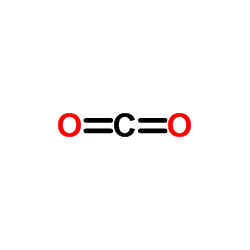 CAS#:124-38-9
CAS#:124-38-9 CAS#:7789-78-8
CAS#:7789-78-8 CAS#:201230-82-2
CAS#:201230-82-2 CAS#:156-62-7
CAS#:156-62-7 CAS#:51437-68-4
CAS#:51437-68-4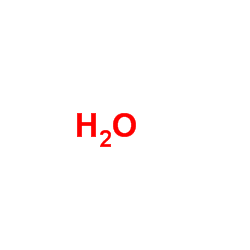 CAS#:7732-18-5
CAS#:7732-18-5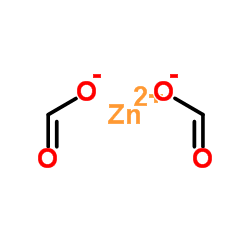 CAS#:557-41-5
CAS#:557-41-5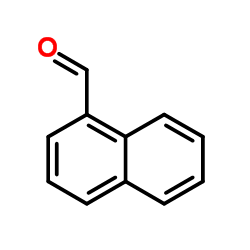 CAS#:66-77-3
CAS#:66-77-3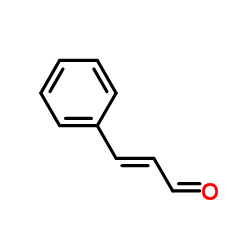 CAS#:104-55-2
CAS#:104-55-2 CAS#:111-87-5
CAS#:111-87-5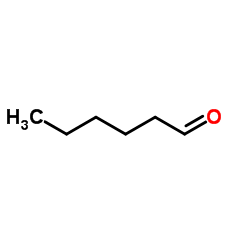 CAS#:66-25-1
CAS#:66-25-1 CAS#:66-99-9
CAS#:66-99-9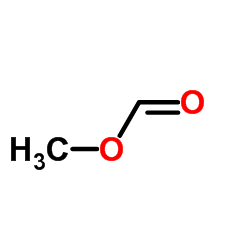 CAS#:107-31-3
CAS#:107-31-3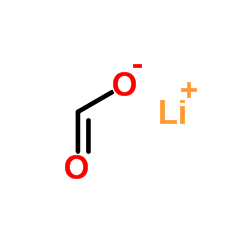 CAS#:556-63-8
CAS#:556-63-8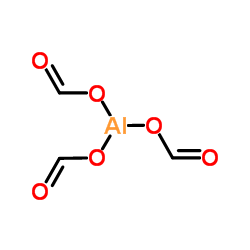 CAS#:7360-53-4
CAS#:7360-53-4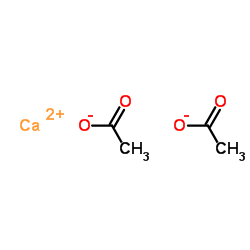 CAS#:62-54-4
CAS#:62-54-4
